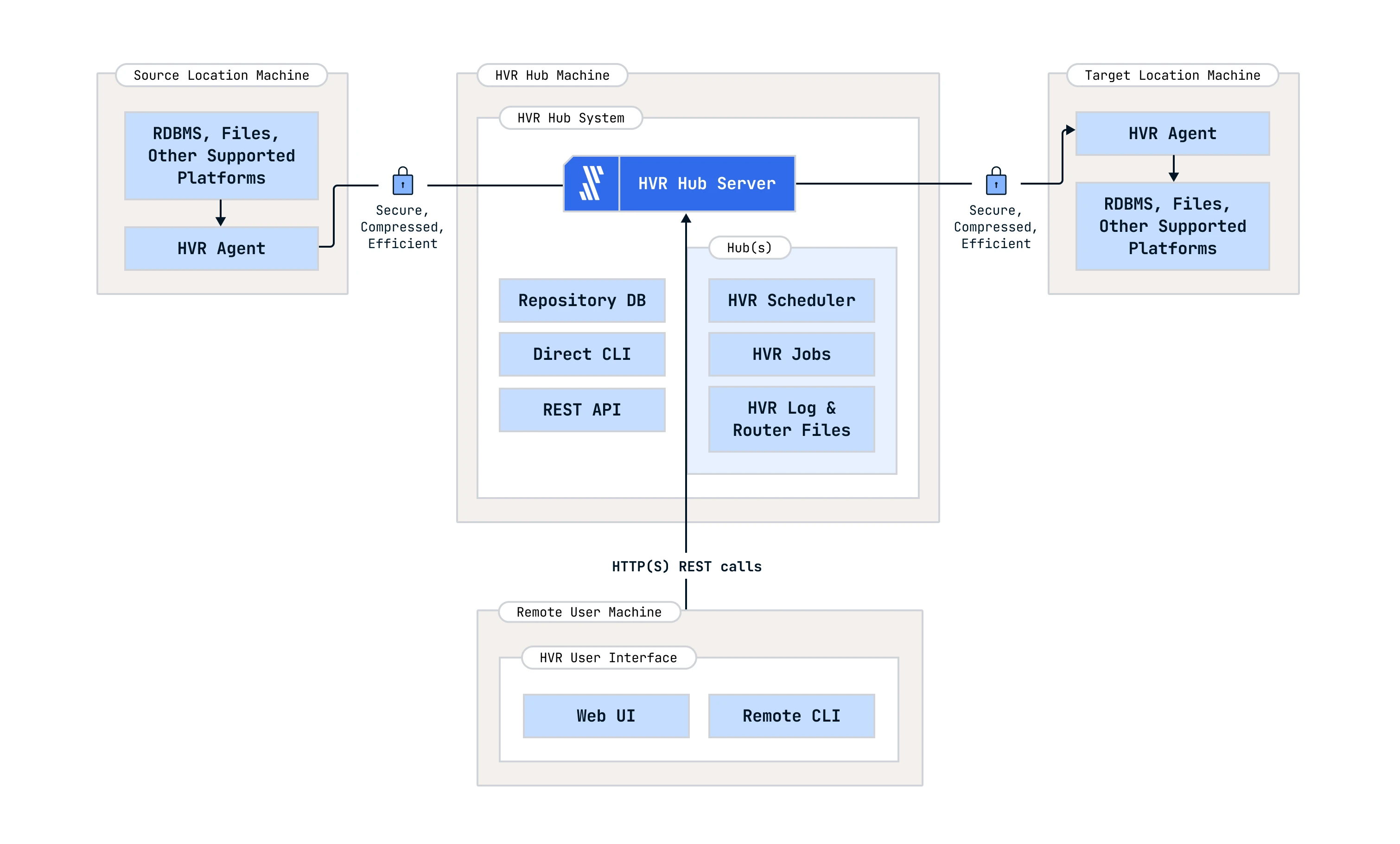Self-Hosted Deployment
Fivetran's Self-Hosted Deployment model, HVR, supports database and file management system replication in enterprise environments. Hosted locally, it allows organizations to process data within their own infrastructure. This gives organizations complete control over orchestration, configuration, credential management, and code deployment.
HVR is suitable for enterprises that require effective, secure, and adaptable data replication solutions. The HVR solution works with a variety of operating systems and supports a distributed architecture, ensuring minimal impact on systems while providing low latency and handling high data volumes efficiently.
Architecture

Key capabilities
Distributed architecture: HVR supports a distributed architecture, ideal for complex, large-scale data environments. It facilitates database and file replication across various Database Management Systems. The HVR Agent, acting as a child process for the hub system, enables secure connections to remote locations for capturing or integrating changes. HVR also offers an agent-less architecture for direct DBMS protocol connections.
Topologies: HVR supports multiple replication topologies, including unidirectional, bidirectional, multidirectional, one-to-many, many-to-one, and cascading. This versatility provides flexibility and scalability in your data replication strategies, allowing you to select a topology that meets your specific data distribution, synchronization, and consolidation needs.
HVR Hub System: This is the central component of HVR, orchestrating replication through logical entities called channels. Key elements of the HVR Hub System include:
- HVR Hub Server: Manages the scheduler and serves as the access point for remote connections. It can serve multiple logical hubs.
- Repository database: Stores metadata definitions for replication processes.
- Hub: A logical entity within the HVR Hub System that manages specific replication tasks.
- Scheduler: Handles replication jobs like Capture, Integrate, Refresh, and Compare.
Interfaces: HVR offers multiple interfaces, including a Web User Interface, Command Line Interface, and REST API, providing flexibility in how you can interact with the system.
Compliance and data sovereignty: With its on-premises deployment, HVR meets the needs of organizations with strict compliance and data sovereignty requirements. Its self-hosted nature ensures your data remains under your control, adhering to specific regulatory and security standards.
For more information, see our HVR Architecture documentation.